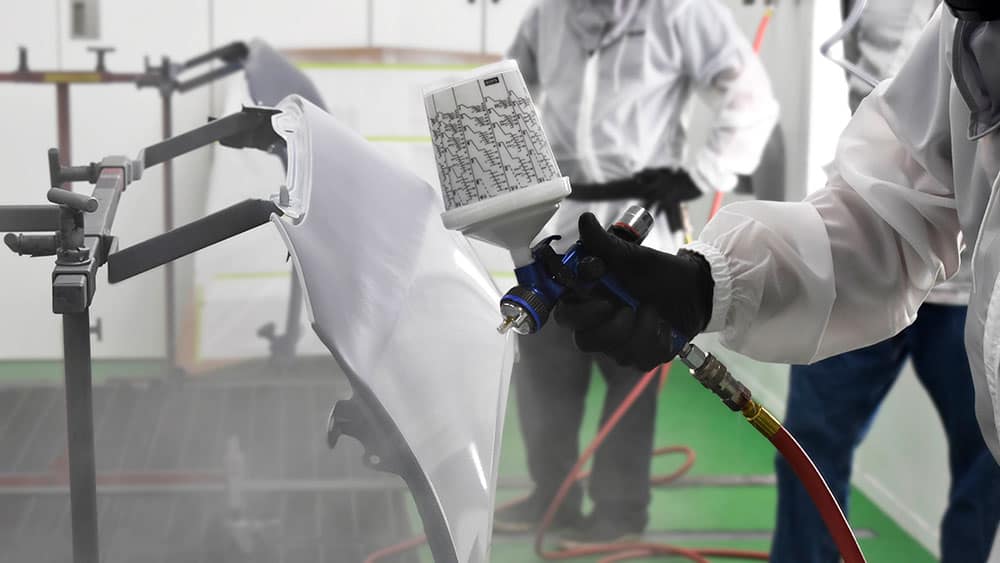
The primary function of a paint booth is to contain paint overspray, keeping your employees and the environment safe. By confining the application of a hazardous material to a controlled environment, paint booths reduce the risk of fire and explosion that can result when paint overspray mixes with other chemicals or sparks. What paint booths are not capable of, however, is protecting the painter’s face and body from exposure to hazardous chemicals and fumes while spraying. It is important for painters to understand why and how to protect themselves from the hazards of paint exposure, especially isocyanates.
When it comes to the exposure of paint to someone working with paint day in and day out, skin contact is a big concern. The reason? Coatings such as paints and varnishes contain isocyanate compounds — a dangerous chemical that can absorb into the skin, irritating the epidermis. In addition to a skin reaction, isocyanates are just as likely to cause breathing issues when inhaled, according to OSHA.
Once a person’s exposure to isocyanates reaches a certain level, they can become sensitized and allergic to the paints and coatings being used. This results in breathing problems, asthma, hives, rash and even a long-term, potentially career-ending health hazard.
There is no set time frame regarding when a painter reaches the point that isocyanate exposure triggers a reaction. A person can paint for 30 years without an incident, or suddenly become allergic in a far shorter amount of time. The best practice is to take correct safety measures from the start.
While OSHA has determined the amount of airborne isocyanates that is hazardous to painters — and will get businesses cited — there is not enough evidence to show how much isocyanates a person can risk getting on their skin. Therefore, any level of surface or skin contamination can be dangerous, according to OSHA.
Given the health risk and the chance of costly penalties, painters cannot afford not to completely cover their faces and bodies when spraying any type of coatings. OSHA 1910.132 states a business owner must provide suits that legitimately protect personnel against isocyanates. But how can a painter or repair facility owner know what suits are appropriate?
Personal Protective Equipment (PPE) protects a person against health or safety risks at work. Protective clothing for painters plays a simple but important role in both safety and quality. Jason Garfoot, senior technical advisor for Global Finishing Solutions, suggests the following:
“A paint suit should cover the painter’s entire body — from their hands to their feet. Not only does this keep dirt out of the paint job, it also protects the painter from exposure to harmful isocyanates.”
Along with the suit, Garfoot suggests only using nitrile gloves, which protect against isocyanate sensitization. A full mask is required, preferably with a fresh air supply to also keep the painter cooler. Booties are optional; they do not provide any additional isocyanate protection, but can protect a painter’s shoes from overspray.
One of the best ways to highlight your business is through a story that you can share across your online platforms. It humanizes your business and shows that your business can make a meaningful impact. Your testimonial would be used as a project profile on the GFS Booth Blog and can be shared on your website and/or social media channels.
Complete this form and we’ll be in touch to showcase your company.

Shop a variety of GFS aftermarket products, including booth protection products and mobile accelerated curing units. And enjoy the convenience of fast and free ground shipping throughout the contiguous United States.

Located at GFS’ headquarters in Osseo, Wisconsin, the Center for Excellence is an innovative facility featuring an automotive refinish training center, as well as a separate space dedicated to technical product training.

GFS is continuously searching for talented, ambitious individuals to join our team. We aim to provide our employees with every opportunity to make an impact on the company and find their niche along the way — weather in a production, field services or an office position.